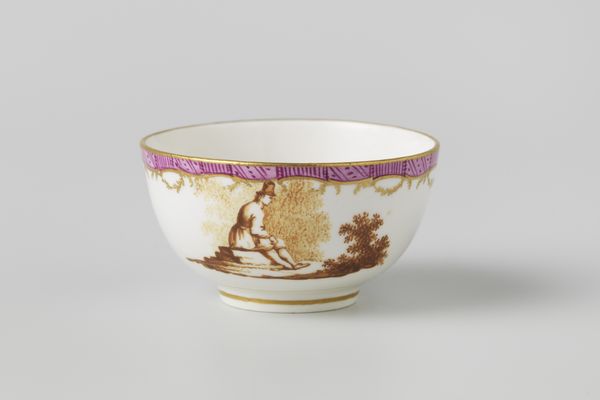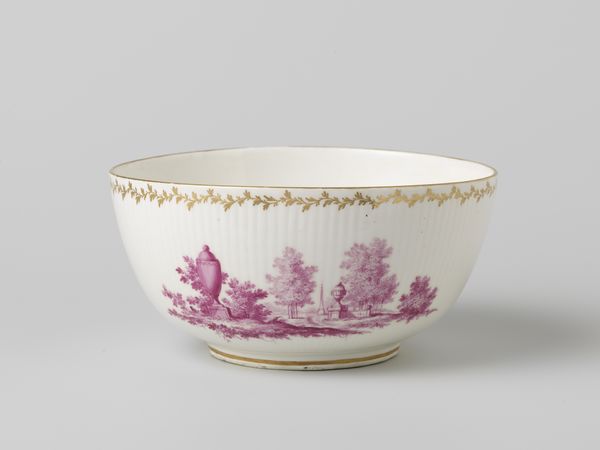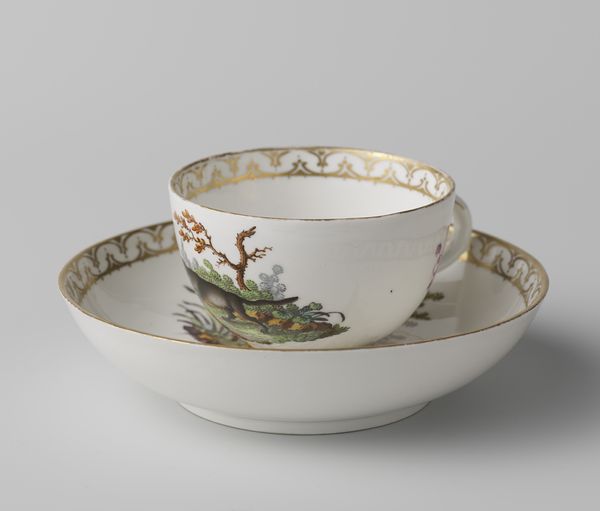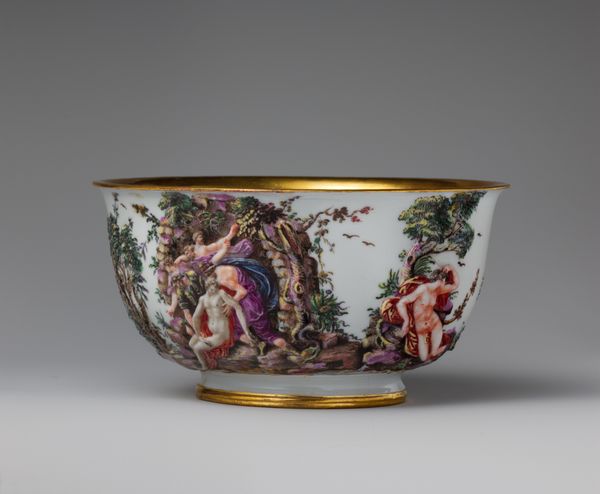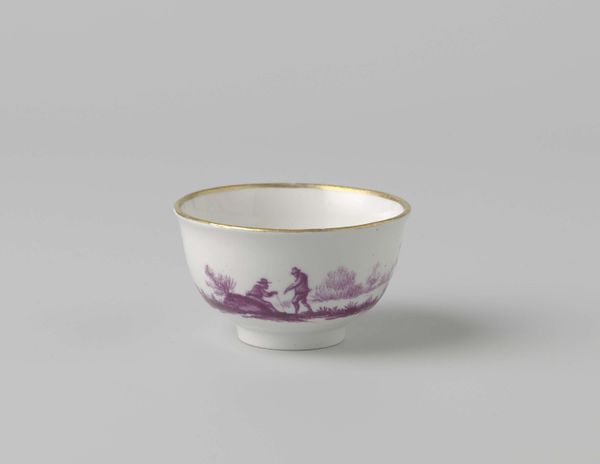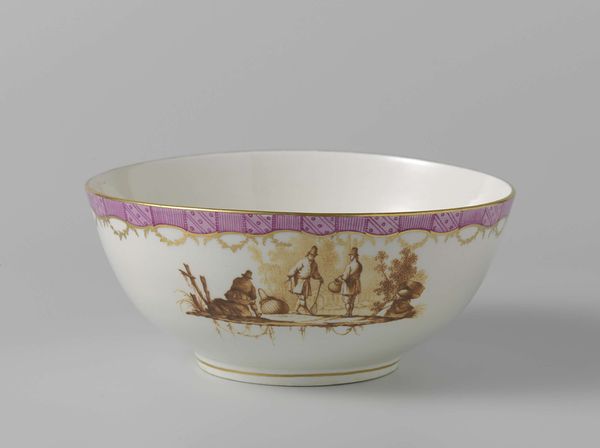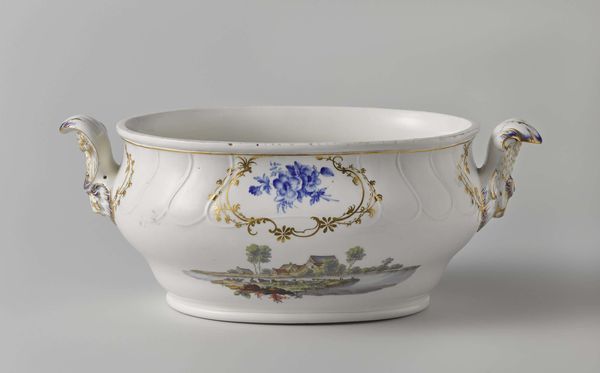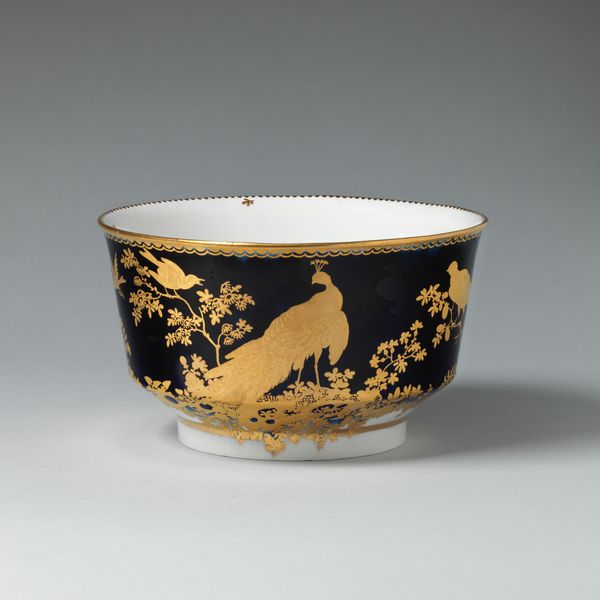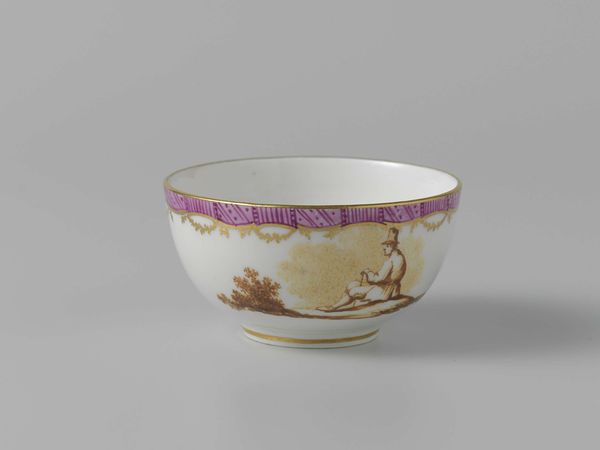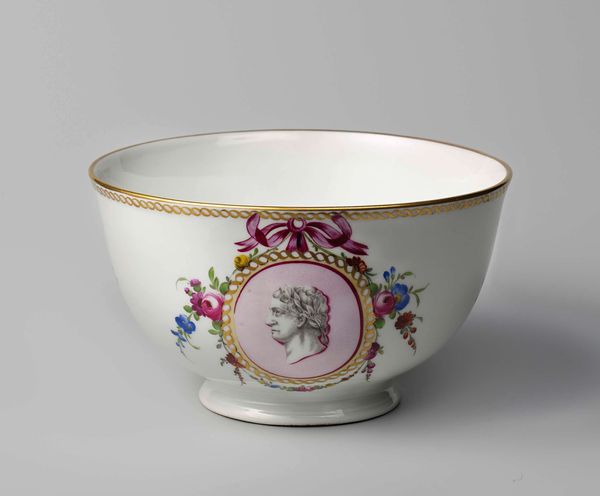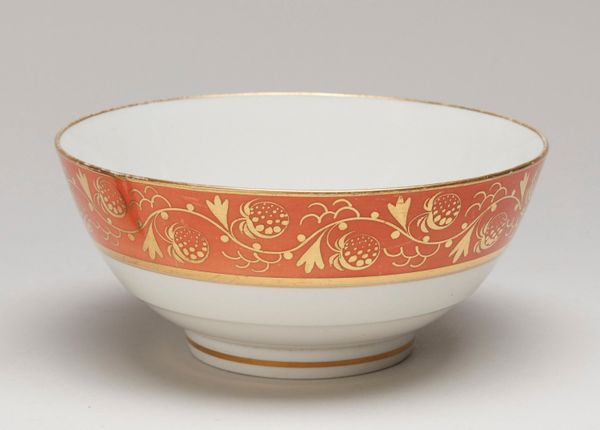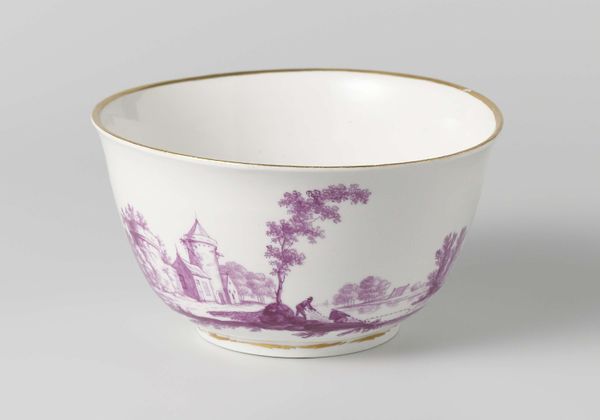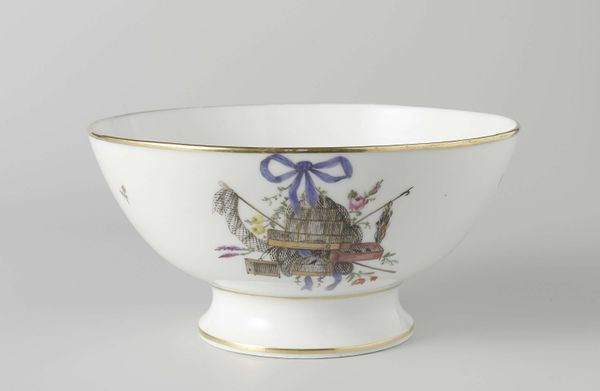
Copyright: Rijks Museum: Open Domain
Editor: So, this bowl with a putto on clouds, crafted in Ansbach around 1785, appears to be made of some kind of ceramic material, and it's really charming. I’m curious, what can you tell me about it? Curator: I see a porcelain bowl that really encapsulates the Rococo period's material obsessions. The means of production of something like this highlights a crucial tension. We often separate ‘high art’ from craft, but here we see a decorative object elevating everyday consumption. How does seeing something mass produced but rendered delicately like this make you feel? Editor: Well, it’s pretty but thinking about mass production kind of cheapens it for me, you know? It doesn't seem particularly unique if many were made. Curator: But consider this – mass production made beautiful objects like this bowl accessible. How did labor factor into the creation of these objects? Think of the artisanal skill and its inherent value despite the production scale. Was this ‘cheapening,’ as you say, a positive change democratizing beauty, or something exploitative that diminished artistry? Editor: I guess I never really thought about it that way. It's kind of like, where does art meet commodity? The beauty of the bowl almost hides the process it went through to exist. Curator: Exactly. We see here the tension between unique creation and accessible, mass-produced object; even the materials - porcelain, glazes - had their own historical production chains of labor and extraction involved. This ‘Bowl with a Putto’ embodies material history far beyond its cute exterior, doesn't it? Editor: It really does. I definitely won't look at decorative art the same way again. Curator: Nor will I. Thinking about all the layers of materiality makes it all the more compelling.
Comments
No comments
Be the first to comment and join the conversation on the ultimate creative platform.
